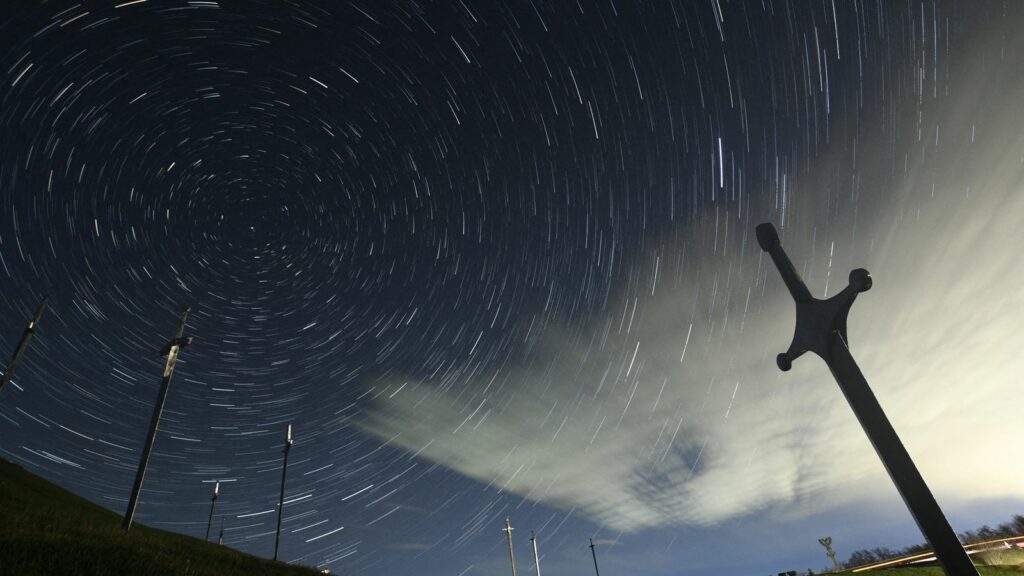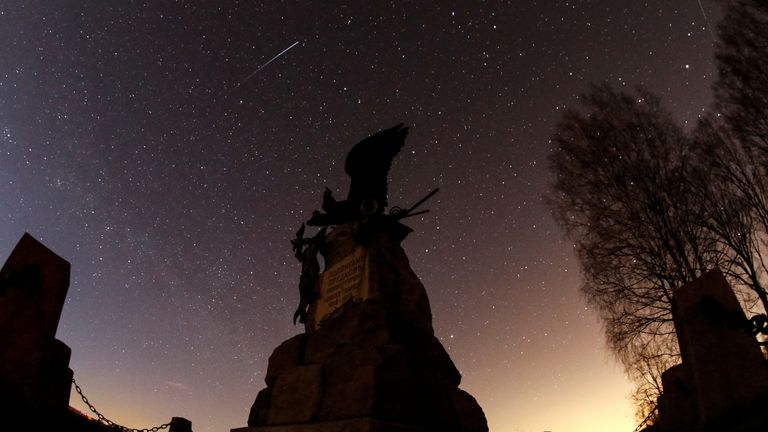Lyrid meteor shower: How UK stargazers can watch the oldest annual meteor shower | Science & Tech News

Parts of the UK are being treated to a dazzling display as the oldest annual meteor shower known to man streaks through the Earth’s atmosphere.
The Lyrid meteor shower peaks during late April every year and was first spotted in 687 BC by Chinese stargazers. This particular display is known for its fast and bright meteors and produces around 18 an hour.
How to watch the Lyrid meteor shower
The moon is nearly full tonight and will be Spring’s ‘pink moon’, which sadly looks the same as any other full moon. The brightness of the moon means you’ll need to watch more carefully to see the shower.
Try to move away from lights to reduce light pollution and look towards the darkest parts of the sky once the sun has set this evening. For the best view, NASA recommends watching during the ‘dark hours’ after the moon has set and before the sun has risen. For the UK, that’ll be around 5am.
Lyrid meteors fall through the sky at the Bathing House near Howick, Northumberland on 22 April 2020. Pic: PA
Clouds have long thwarted stargazers and for parts of the UK, tonight will be no different. The best places to watch the shower will be around Preston, Manchester, Kendal, Scotland and around the South East coast from Lowestoft to Brighton.
NASA recommends letting your eyes adjust to the dark for around 30 minutes. After that, you’ll begin to see meteors.
“Be patient,” says the space agency, “The show will last until dawn, so you have plenty of time to catch a glimpse.”
Read more from Sky News:
NASA chief: China is hiding military projects in space
Massive black hole found ‘lurking undetected’ close to Earth
British astronaut to return to space with first all-UK mission
The Lyrids peaked overnight into 22 April but will be visible for the rest of the month around the Northern Hemisphere. The further away from the peak, however, the fewer you’ll see.

The Lyrid meteor shower seen from Russia in 2020. Pic: Reuters
What causes the Lyrid meteor shower
The Lyrids come from the constellation of Lyra. Their actual origin is the Comet Thatcher, which isn’t named after the former prime minister but the amateur astronomer Alfred Thatcher, who discovered it in 1861.

Keep up with all the latest news from the UK and around the world by following Sky News
Tap here
Meteors are chunks of debris left in the wake of comets and other celestial objects. When Earth passes the debris, some of it falls into the atmosphere.
These chunks are moving very quickly compared to our atmosphere so the air around them heats up.
This makes the meteor heat up too and glow brightly, which is what we see.
The surface of these meteors can reach up to 1600 degrees celsius.

Recent Comments